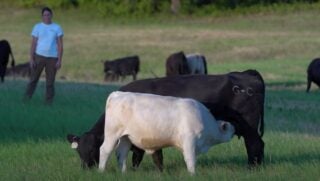The Agriculture Resilience Act, which outlines a farmer-focused, research-driven path to net zero agriculture, was introduced this week. The ARA will refocus federal conservation, research, renewable energy, and rural economic development programs on climate resilience and empower farmers and ranchers eager to drive climate change solutions on the ground.
Farmers and ranchers know the fundamental threat that the climate crisis poses to their livelihoods and the viability of agriculture and have called on Congress to support them as they implement climate stewardship practices and build resilience to climate stresses.
“Extreme weather events are upending farmers’ bottom lines, threatening their businesses and risking the future of our food supply. Congress must work to keep farmers on their land, and we must work to empower those farmers to implement climate-smart practices that reduce the nation’s greenhouse gas emissions and increase their resilience in the face of climate change,” said Representative Chellie Pingree, who introduced the bill. “The Agriculture Resilience Act focuses on solutions that are farmer-driven in order to reach net-zero emissions in this sector by 2040.”
In 2019, agricultural activities contributed 9.6 percent of total U.S. greenhouse gas emissions. To reach net-zero agricultural emissions by 2040, the ARA offers farmer-driven solutions rooted in science which build upon a suite of existing USDA research and conservation programs. The ARA would empower farmers by:
Increasing USDA Research & Regional Climate Hubs
- Increases funding for USDA’s Regional Climate Hubs.
- Invests in public breed and cultivar research.
Improving Soil Health
- Authorizes USDA to offer performance-based crop insurance discounts for practices that can be demonstrated to reduce risk.
- Creates new USDA grants to state and tribal governments to improve soil health. Directs USDA to establish a Soil Health and Greenhouse Gas Advisory Committee.
Protecting existing farmland
- Creates a new Local Agriculture Marketing Program (LAMP) subprogram to help farmers develop and expand markets for farm products that improve soil health.
- Increases funding for the Agriculture Conservation Easement Program.
- Supporting pasture-based livestock systems
- Creates a new grant program to support small-scale meat and poultry processing infrastructure.
- Establishes a new Grasslands 30 Pilot Program through which grasslands at risk of conversion to cropping or development can receive annual payments.
Boosting investments in on-farm energy initiatives
- Increases funding for USDA’s Rural Energy for America Program.
- Directs USDA to research dual-use energy systems that integrate renewable energy production with crop or animal production.
Reducing food waste
- Standardizes food date labeling to reduce consumer confusion.
- Creates a new USDA program to reduce food waste in schools.
“Farmers and ranchers are increasingly being recognized as an essential part of the solution to the climate crisis,” said Eric Deeble, National Sustainable Agriculture Coalition Policy Director. “They are committed to healthy soils and resilient, sustainable production systems because they face the rising pressures of a changing climate every day and they know what’s at stake — their livelihood and their legacies. The ARA puts producers at the center of meaningful and long-lasting policy action on climate change.
The updated section by section and fact sheet for the ARA can be found here.


